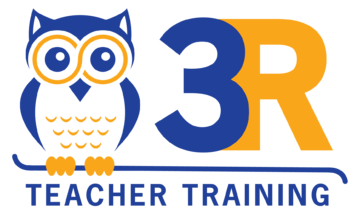Teachers and administrators, have you ever wondered how to truly engage your students in profound, meaningful thinking from the moment they step into the classroom? The secret lies in the power of thinking tasks. Based on the insightful work of Peter Lilijedahl, as highlighted in his book, “Building Thinking Classrooms in Mathematics,” I extracted some actionable strategies that can revolutionize how you approach teaching.
Begin with a Bang! Start your class with a thinking task. This problem allows students to get stuck, experiment, and apply their knowledge in new ways. It's not about giving them the answer but rather providing an opportunity to think deeply and engage with the curriculum from a fresh perspective. I'll never forget that Tuesday morning, entering the school building and getting ready to observe a student teacher who planned a lesson on Pythagoras' theorem. I met with the student teacher several days before. She was planning on a lecture-type lesson. I suggested she read Peter Lilijedahl's “Building Thinking Classrooms in Mathematics” over the weekend and try to incorporate something from his book to help design her lesson. I arrived a few minutes early and was met by an excited student teacher who quickly told me how much she enjoyed her reading over the weekend. I then noticed a rather large ladder in the classroom and wondered if this was a prop for the lesson. As the students arrived, they also noticed the ladder, and I immediately noticed they became alert and curious. The students were primed to start the lesson, as they were attentively waiting for an explanation about the ladder and the stranger in the classroom (me!). Instead of starting with a lecture, the student teacher presented a real-world problem: “If a ladder is leaning against a wall with its base 4 meters away from the wall, and it reaches a height of 3 meters on the wall, how long is the ladder?” The room buzzed excitedly (“Because a quiet math classroom is a suspicious classroom”– Dr. Yeap). Samantha, who usually doodled in her notebook, drew triangles and discussed her thoughts with her neighbor. Jake, often the class skeptic, debated different methods to find the ladder's length. By the time they delved into the theorem, they had already grasped the concept intuitively. This was the magic of starting with a thinking task. It wasn't just a problem; it was a story, a puzzle, a challenge.
The trick is coming up with a good Thinking Task. So, what’s a good Thinking Task? The task should be:
- Highly engaging
- Have easy entry points for all students
- Evolve in complexity as students delve deeper
I always try and stop in to see old colleagues when I’m visiting their school. One day, I quietly entered a colleague's classroom, hoping not to disrupt her teaching, but not one student stopped what they were doing to even look at me. Luckily, I wasn’t offended but rather happy to see them engaged in an activity. You see, this colleague, an excellent and caring teacher, usually started her geometry lessons with definitions and formulas. But this time, she began with a simple yet intriguing question: “Can you arrange six identical sticks to form four equilateral triangles?” The room was silent momentarily, then slowly filled with murmurs and the shuffling of sticks. I was later told that one student often struggled with abstract concepts. Still, I observed a student who was the first to find a solution by thinking three-dimensionally and creating a tetrahedron. Her face lit up with pride, and she eagerly shared her discovery with the class.
Before diving into the curriculum, consider beginning your course with non-curricular tasks. These tasks might not directly map to curriculum expectations but are designed to be so engaging that everyone gets stuck. This makes the state of ‘being stuck' an expected and socially acceptable learning phase. One example that comes to mind is in a classroom where the teacher began the lesson with a story. “Imagine you're detectives trying to solve a mystery. You've found a secret note with a series of symbols and numbers. Can you decode the message?” The teacher then presented them with a simple algebraic equation disguised as a coded message. The atmosphere in the classroom shifted instantly. Kevin, who usually found algebra tedious, led his group, enthusiastically trying to ‘crack the code'. By the end of the lesson, not only had they decoded the message, but they had also grasped the foundational concepts of algebraic equations.
Another actionable strategy is to incorporate thinking routines into your daily lessons. Routines are essential. For instance, start the day with a brain teaser or problem. You can use the “Photo Friday,” which is a routine where students analyze images and engage in conversations to develop their thinking skills. “Photo Friday” not only encourages students to think critically about the images but also allows them to connect the visuals to broader themes, subjects, and real-world issues. It's a versatile tool that can be adapted to fit any age group or subject matter.
Examples of Discussion Prompts:
- Describe what you see in the photograph.
- How does this image make you feel?
- What do you think the photographer wanted to convey with this image?
- How does nature interact with man-made structures in the photo?
- Imagine living in this city. What would your daily life be like?
- What challenges and benefits might this “urban jungle” present to its inhabitants?
Try to challenge their perceptions. Introduce tasks like “How Scientific Is It?” where students evaluate the credibility of scientific claims they encounter in everyday life, like in advertisements or web pages. This sharpens their critical thinking skills and makes them more discerning information consumers. Our ultimate goal is to get students to think, experiment, fail, and then apply their knowledge in novel ways to get unstuck. It's about fostering a culture of curiosity, resilience, and deep learning.

